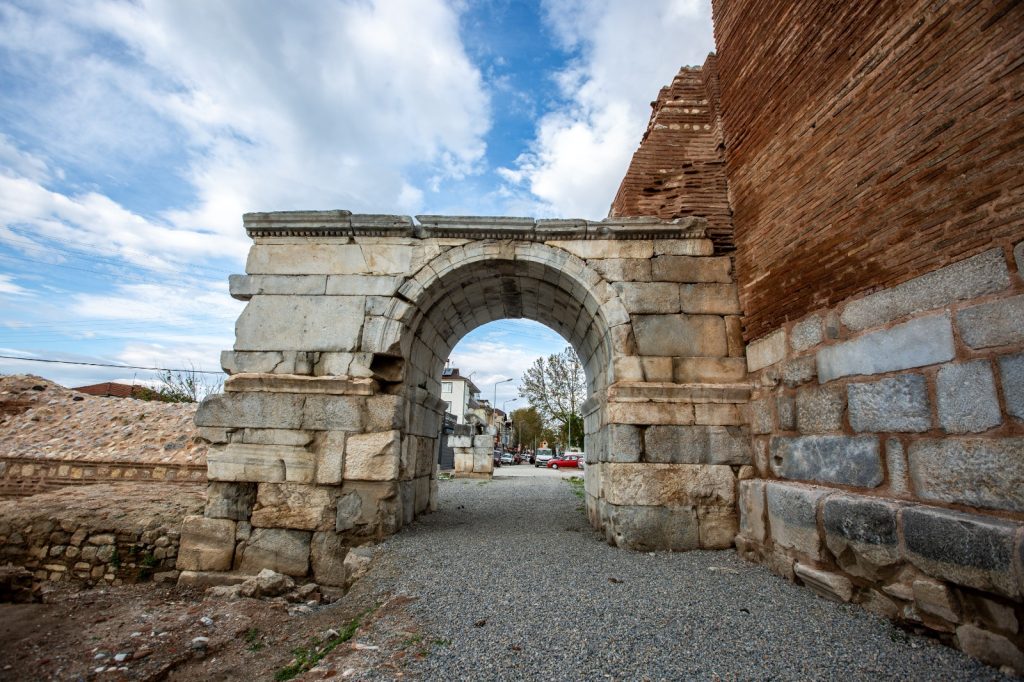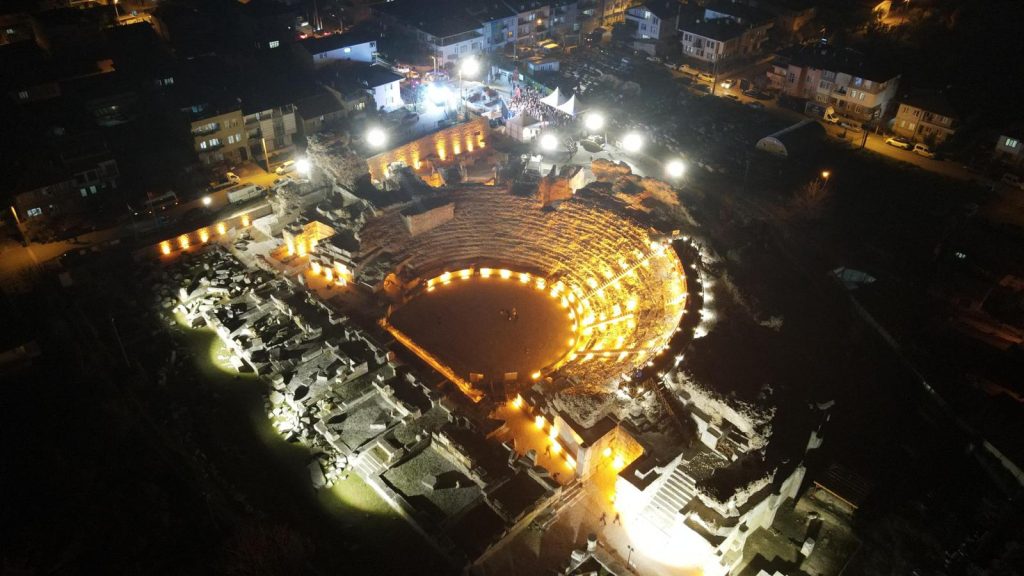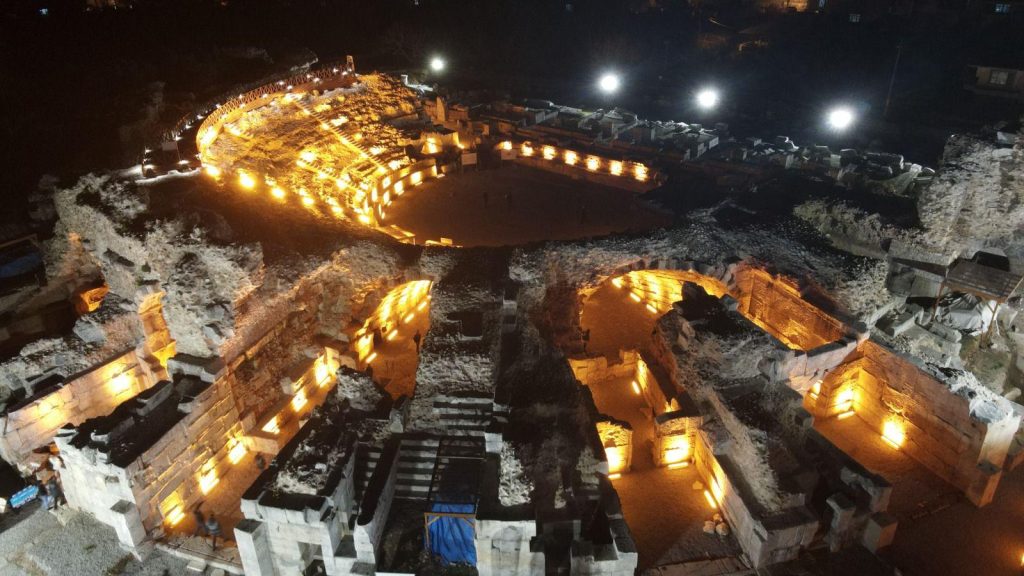
1800-Year-Old Roman Theater in Iznik Restored
The Iznik Roman Theater, a 2nd-century structure built during the Roman Empire, has been fully restored after extensive renovations. The theater, located in the Iznik district of Bursa, Türkiye, is one of the best-preserved Roman theaters in the country.
The Iznik (Nicaea) Theater was built by the Roman Emperor Trajan for the historian and writer Pliny, who was the Governor of Bithynia.
The Roman Theater of Iznik has a seating capacity of 15,000 and was used for various performances such as plays, musical shows and gladiatorial contests. The theater was also used for public meetings and political rallies.
According to the statement made by Bursa Metropolitan Municipality, there are historical artifacts in every corner of Iznik, which was founded in 316 BC by Antigonius Monophthalmos, one of the commanders of Macedonian King Alexander the Great, and bears the traces of Bithynia, Roman, Byzantine, Seljuk and Ottoman civilizations.
📣 Our WhatsApp channel is now LIVE! Stay up-to-date with the latest news and updates, just click here to follow us on WhatsApp and never miss a thing!!

The Iznik Roman Theater, where excavations have been underway since 2015 under the sponsorship of Bursa Metropolitan Municipality, is one of the most magnificent surviving works of the Roman period in Anatolia.
The theater, which is the only example in Türkiye in terms of architecture because it was built on a flat area and raised with vaults, was built by the Roman Emperor Trajan in the 2nd century by the historian and writer Plinius, who was the Governor of Bithynia.

The theater, which once hosted gladiator fights, was used as a religious site after Christianity.
The historical structure underwent repairs due to damage caused by major earthquakes in 358, 362 and 368.
With the permission of the Ministry of Culture and Tourism, the excavations in the Iznik Roman Theater, where work began in 1980, were continued by the team headed by the Department of Archaeology of Dokuz Eylül University since 2015 with the involvement of Bursa Metropolitan Municipality.

The walls of Iznik, the construction of which started in the 4th century BC during the Bithynian Period in Iznik and which was 2.5 kilometers long according to the information given by Strabo, one of the ancient writers, were strengthened and extended after the attacks of the Goths, one of the barbarian tribes living in Northern Europe, in 258, and reached a length of 4 thousand 970 meters with 4 main and 12 secondary gates.
You may also like
- A 1700-year-old statue of Pan unearthed during the excavations at Polyeuktos in İstanbul
- The granary was found in the ancient city of Sebaste, founded by the first Roman emperor Augustus
- Donalar Kale Kapı Rock Tomb or Donalar Rock Tomb
- Theater emerges as works continue in ancient city of Perinthos
- Urartian King Argishti’s bronze shield revealed the name of an unknown country
- The religious center of Lycia, the ancient city of Letoon
- Who were the Luwians?
- A new study brings a fresh perspective on the Anatolian origin of the Indo-European languages
- Perhaps the oldest thermal treatment center in the world, which has been in continuous use for 2000 years -Basilica Therma Roman Bath or King’s Daughter-
- The largest synagogue of the ancient world, located in the ancient city of Sardis, is being restored











Leave a Reply